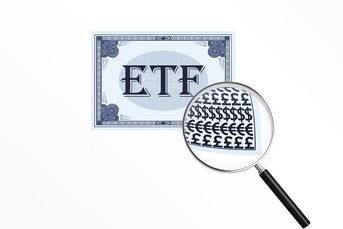Conduct due diligence on bond funds beyond a performance review
Position a portfolio to look forward and not just backward.
When sorting through the bond mutual fund universe, what’s inside may be different than you expected and can be harmful (or rewarding) for your client’s portfolio.
Despite increased pressure from lower-cost passive mutual funds and ETFs, actively managed products continued to gather new money in the past 12 months. According to Morningstar, active taxable bond funds gathered $96 billion of new money in the one-year period ended March 2017. While this lags the $165 billion gathered by passive funds, it is much stronger than the $270 billion of net outflows experienced by active U.S. equity funds.
(More: Think you’re an expert on market sentiment? So does everyone else)
While finding a fund with past performance success is important, as it signifies that management has demonstrated skills to running the portfolio, advisers need to dig deeper. To generate an attractive yield, bond mutual funds can take on more credit risk or interest rate sensitivity, as measured by duration. Often an adviser or investor may narrow the universe to two strong performing funds with different risk profiles.
For example, Prudential High Yield (PBHAX) and Guggenheim High Yield (SIHAX) are in the top quartile of the Lipper High Yield mutual fund peer group on a three-year basis. However, PBHAX recently had more exposure to more speculatively rated bonds rated BB (45% vs. 40%) and CCC (14% vs. 8%) and less exposure to higher rated BBB (35% vs. 40%) than SIHAX. The higher credit risk is somewhat evident with a PBHAX’s higher 5.6% 30-day SEC yield (5.5%).
If the credit markets weaken as they did in 2015, SIHAX may again outperform PBHAX; the Guggenheim fund 2.4% decline was narrower than PBHAX’s 2.9% loss.
(More: Vanguard, iShares dominate ETFs in April)
In addition to credit risk, investors need to understand the duration of the portfolio as pending rate hikes by the Federal Reserve and the market’s reaction to them can impact a fund’s future performance.
Both American Funds Bond Fund of America (ABNDX) and Dodge & Cox Income (DODIX) have outperformed their Lipper Core Bond fund peer group on a three-year basis and have the vast majority of assets in investment-grade bonds. ABNDX has an average duration of six years, above the 5.7 years peer average, while DODIX’s duration is 4.2 years.
When bond yields rise, the performance of a fund with a higher duration should be hurt more than its peers. In contrast, when yields fall, the fund should be helped more. Yet, DODIX has higher exposure to BBB-rated bonds (16% vs. 31%) than ABNDX.
(More: Bond funds soar as stocks slump and hopes for economy start to dim)
By combining past performance metrics with bond holdings level analysis such as credit ratings and duration, advisers can position a portfolio to look forward and not just backward.
Todd Rosenbluth is director of ETF and mutual fund research at CFRA.
CFRA will be participating in an InvestmentNews webcast on Thursday, April 27 at 4 p.m. titled “Changing market, shifting fixed income strategies.” Click here to register for the event.
Learn more about reprints and licensing for this article.






